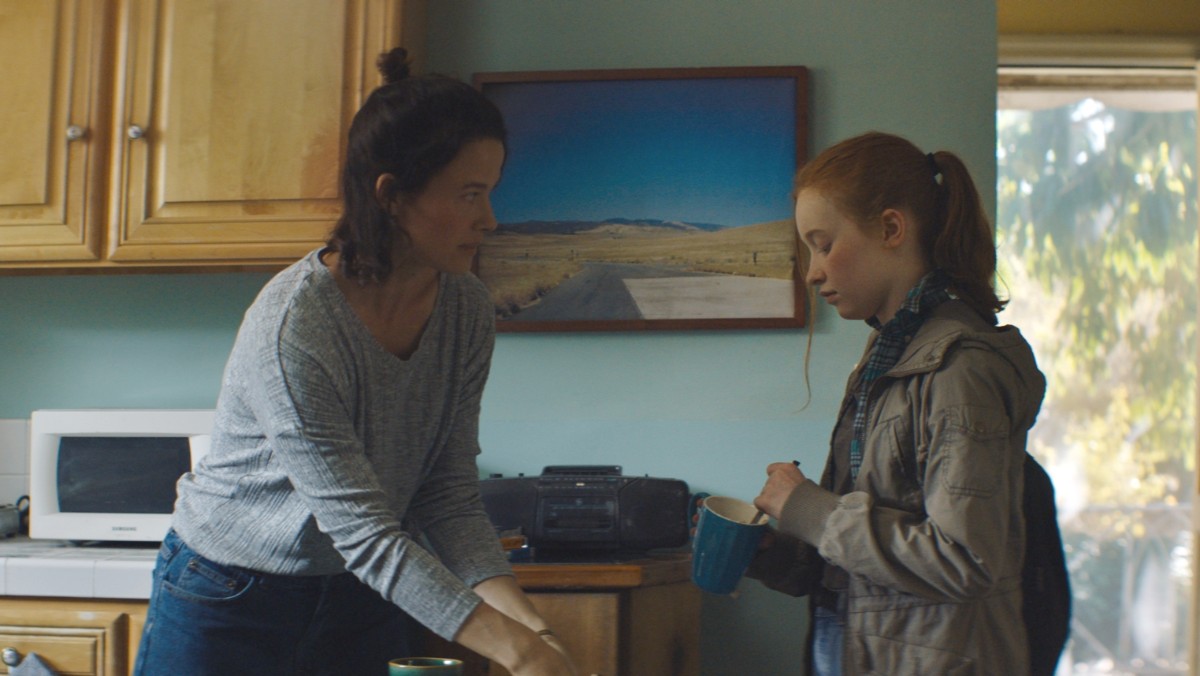
A Case Study
Narrative | Dramatic Features
Film Name: The Hideaway
Genre: Drama, Coming of Age
Date: August 11th, 2020
Director: Jane Stephens Rosenthal
Producer: Ross O’Shea, Katie Paczynska
Writer: Jane Stephens Rosenthal
Story by: Anthony Sneed
Cinematographer: Jo Jo Lam
Editor: Krishna Sanchez
Production Company: Graduating project through The American Film Institute
Budget: $45,000
Financing: Crowdfunding, friends, and family as part of the AFI Thesis assignment
Shooting Format: Digital / Anamorphic
Screening Format: Digital
World Premiere: Hollyshorts November 2020
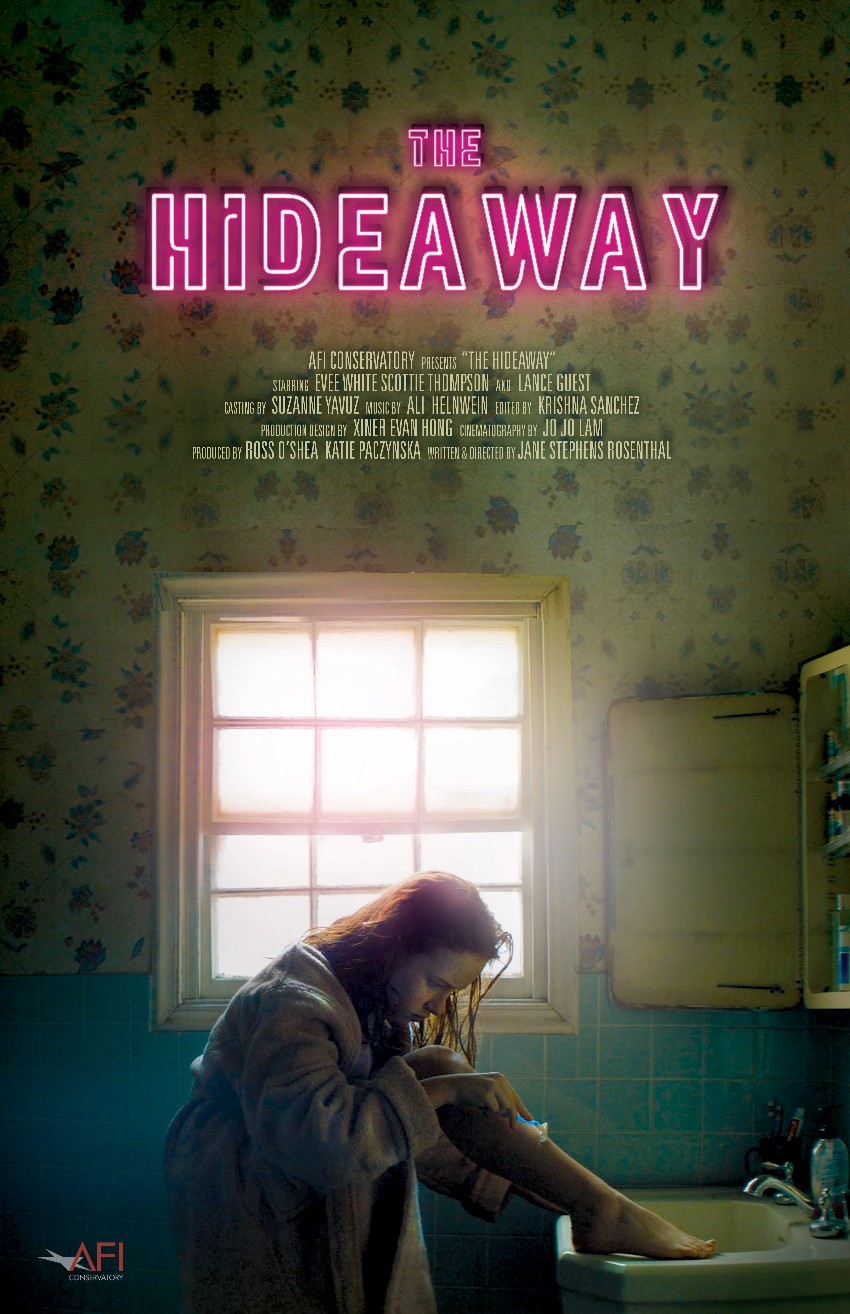
indieactivity: What’s the Hideaway about?
Jane Stephens Rosenthal (JSR): The Hideaway is a coming of age story about a fourteen-year-old girl Nika (played by the effervescent EVee White) who is on the edge of adolescence. Her body is beginning to change, her friends are beginning to change, and she is not quite sure who she wants to be or how she wants to fit into a world that is feeling more and more chaotic and out of her control and comfort zones. Her father is out of the picture and her mother seems to wield this all-knowingness, this ease, this glow of womanhood that gets everyone riled up, and just torture’s Nika to no end.
Watching her mother be a type of beauty that seems impossible to ever achieve, Nika feels like she is just trying to keep up, trying to catch up, trying to figure out how to not be left behind or left out, so when she finds out that her mother is a stripper she is shocked and embarrassed that she didn’t know, and angry that her mother wouldn’t share it with her, and angry at herself for not putting it together, and then Nika’s anger slowly morphs into understanding and awe when she sees her mother at work.
The story of the Hideaway first came to us through fellow American Film Institute directing student, Anthony Sneed. Anthony described a story about a boy being teased by his friends that his mother is a stripper and how he goes on an adventure to discover if it is true or not. It was a fun romp filled with twists and turns and very Anthony, but when I heard him speak I started thinking about gas stations at night, and big trucks, and freeways, and the desert, and parents and children, and about my own family, and truck stops, and the edge of towns, and my mother, Wyoming, and the in-between places, and how it feels to be a daughter and constantly trying to measure up.
The Official Trailer for The HIDEAWAY written and directed by Jane Stephens Rosenthal
And I asked if I could borrow the story from him. And then, because I often begin my work as a writer from a deeply personal place, and usually in feelings, and thinking of how those feelings would look like pictures, I began to imagine how it feels to be a woman, what that might look like on the screen, what it felt like growing up, and the story morphed from being about boys to being about a girl, and about exploring sexuality – the dichotomy of sexuality, the power and the fear around it, and coming of age, as well as the relationship between child and parent, and the shift that happens when you realize that your parent is just a human being trying their best. And how real adulthood is that moment.
And how heartbreaking and empowering that moment can be, and it is one that I feel is often overlooked. I am also as an artist just obsessed with the idea of “becoming”, of how one becomes an adult, how one becomes a woman, how it happens, when it happens, and so often when I look back at my own growing up, I wish there had been someone there to tell me that all my desire and fear and longing were okay and that it was okay to become a woman and there was nothing to be scared of, even though it can be very scary to be a woman, and I’d like to think the Hideaway does that for people. Tells them that it is all okay. And maybe makes them think of thanking their parents for trying their best.
Tell us about the festival run? The Hideaway just had its premiere?
Jane Stephens Rosenthal (JSR): Yes! The Hideaway just had its State-side premiere at The Hollyshorts Film Festival and is continuing its festival run. We literally just finished the film in August and it was exciting to get it out into the world so soon. People have really enjoyed the film so far and have related to this very specific moment in the time of growing up and the longing to grow up, and the shock of growing up, and as with all of my work I hope people continue to see it and get to take a deep breathe and feel seen and heard or get to pause and reflect.
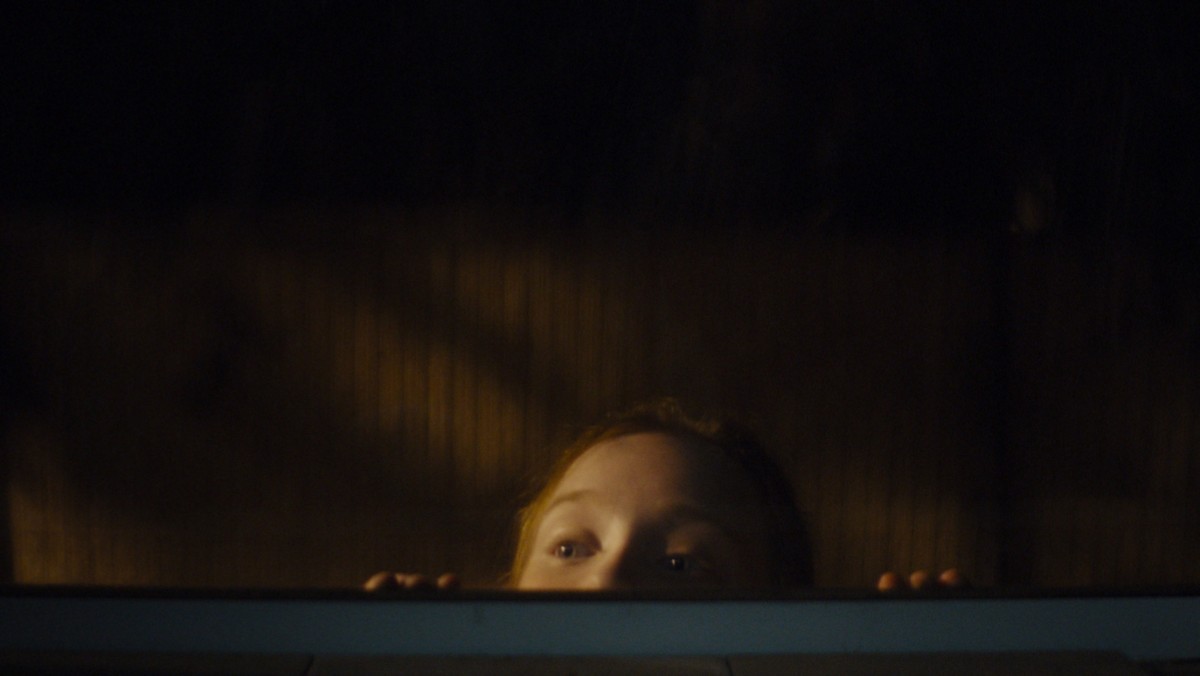
Can you tell us a little more about the specifics of The Hideaway? Can you tell us about the budget, the financing, and finally the production?
JSR: Working with children ends up being very expensive because of the studio teacher and the hours one is able to shoot, and our desire to create a very specific color palette and atmosphere with our lights and shooting on anamorphic lenses, and our wonderful sound design, our budget for the film ended up being about $40k. All of us have spent hours and days working for free and out of love for a project that it was important to us to raise as much money as we could and be able to pay people their proper fees where we could.
Because this was a thesis film (The Hideaway) through the American Film Institute we raised money by going to friends and family and then asking them, in turn, to share with their friends. When raising money for a movie every dollar helps, from $5 to $500, I like to say! I found that people were interested in the story and in investing in us as new filmmakers, which is always exciting. I also find it helpful when crowdfunding in this way to tell people where their dollars are going. So $10 would go to helping with a set medic, or to a type of light we wanted, or $50 to the stunt coordinator, or to gas for the generator– or to provide snacks, etc. People like knowing where they are specifically helping out and I think it makes them feel a part of the process and fun for them to imagine.
We’d love to know a little more about the development and process of The Hideaway?
JSR: For me, the location was very important in this film (in any film, I believe) location is one of the main characters in the story. The way light falls in certain cities, at certain times, or the way a breeze might feel, all of this is picked up by the camera. When writing the script I spent a lot of time in the San Bernardino Mountains, staying at a friend’s place and going to the Stater Brother’s, and driving up and down the mountain when I needed something more, like a specific type of cat food or was looking for a copy of East of Eden, and I often thought of this mountain enclave and how one left the mountain to go into the city, and I thought a lot about the friends I grew up with in Wyoming and all the edge of towns, and summer, and how one could keep their profession hidden, how we all have secrets.
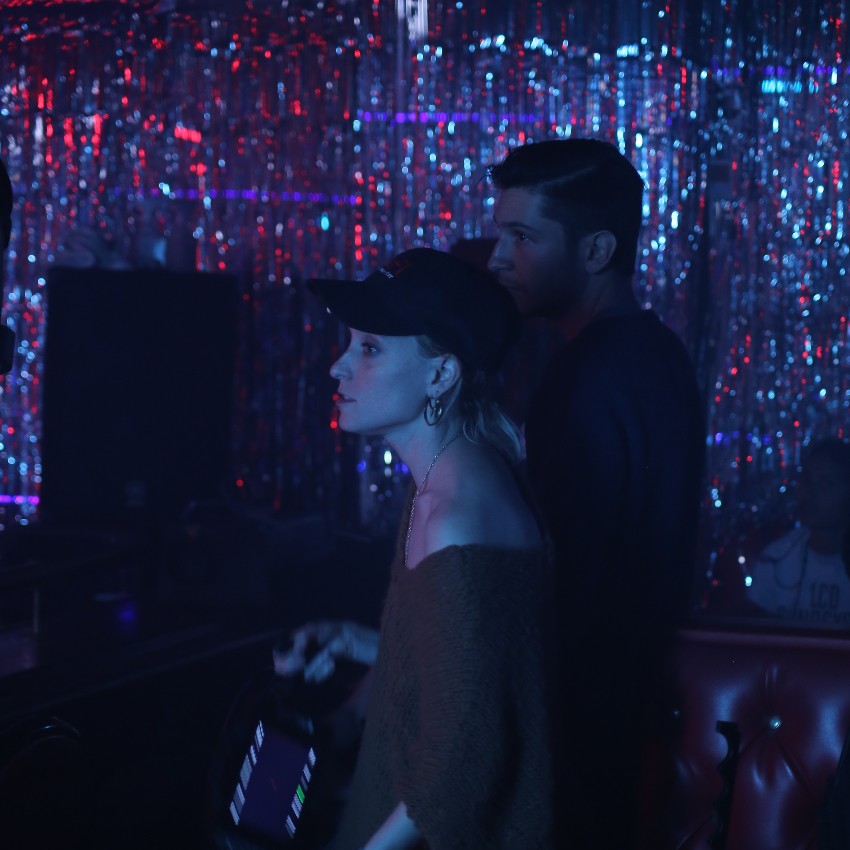
I was originally lobbying for the script to be titled “Down The Mountain” because I had a vision of Nika getting on a bus, or hitching a ride into the heart of town, but because of budget and some American Film Institute rules, we had to shoot within a specific mile zone of Los Angeles, so we carved out spots for ourselves in Northridge and Sunland, and Van Nuys which gave the film the texture and feel of being almost anywhere. The almost anywhere quality was important to me in the film, that there was a no-where-ness to it, sort of how Nika is in this in-between space, the story was as well, before landing fully in itself. Both Jo Jo, the cinematographer, and I, are huge fans of photography and photojournalism and for many of our projects together we have pulled images from photojournalists and thought a lot about color, and so we started in the same way with this project, pulling images from our favorite photographers and talked a lot about how we wanted the film to feel and look and shift.
Thus the idea of shooting on anamorphic lenses was born. It was very important to us that we tell a female story and that the gaze was one of empowerment and admiration and not just objectification. A big influence on the film was photographer Susan Meiselas’ Carnival Strippers. As far as the production went and the actual filming, being able to prioritize our time with EVee and have her feel as comfortable as possible and get all the little pieces of her, we could be the priority. That the characters felt lived in, and the spaces did too.
I love being on set, and the energy of making something you’ve dreamt about for so long, and having it come to life before your eyes is so thrilling. There is nothing like watching actors slip into the roles and the camera picking it up. But almost more than filming I love editing. It’s true what they say, you have the script, then you have the movie that is in your head, then you have the movie that you shoot, and then you have the movie that you find in the edit. The editor, Krishna Sanchez, and I spent a lot of time before production talking about what I wanted the film to feel like, a lot about personal feelings of growing up, about how when a girl becomes a woman there is no way to stop it, it happens and you feel awed and also wildly out of control, and suddenly everyone is looking at you differently, and your insides usually don’t match the outsides yet, and I really wanted to make sure we sat in these spaces with Nika, to really see her experience as it unfolded.
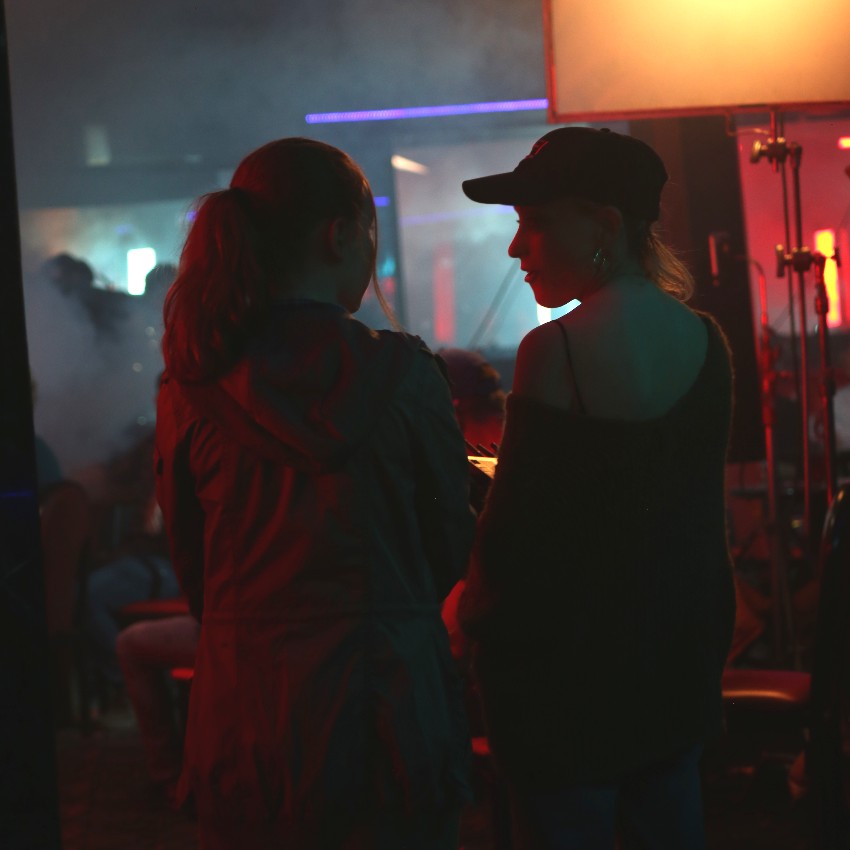
I really believe a film is a living thing and needs to breathe and I was adamant that we let it. Krishna is a really gentle and thoughtful editor and was very much a part of the pre-production process and my reader of drafts and my bouncing board of thoughts, so he had a very good handle on how I would like to see the film cut, but we also learned in the process together, when to let it talk to us. For example, Scottie Thompson, who plays Nika’s mother, Chrissy, learned an entire choreographed striptease for us and she is so graceful and sexy and powerful that for about two months Krishna allowed me to have the entire 3-minute dance sequence play out before firmly but kindly suggesting we cut it down because although Scottie was extraordinary and we could showcase that, the scene was ultimately about Nika and her experience.
It was hard to let go, but in the end that cut made the whole club moment stronger between mother and daughter, the “pow” when they see each other and the shift to both their worlds. One of the last elements of the film, before it was ready to go out into the world, was tackling the soundscape. Because I work from a place of feelings it is always incredible to find collaborators who also approach “story” in this way and I was lucky enough to meet Nathan Ruyle through a mutual friend. I had heard Nathan do an incredible lecture on sound and just fell in love with the way he hears the world and felt so lucky to connect with him. Sound and the introduction of it in the film, the way it envelopes us, and then the absence of it is really important, and I think he nailed it!
Tell us about your festival run. Is there a strategy for The Hideaway?
JSR: Because this is such an intimate and personal story, we really looked at festivals we felt would understand and dig the quietness of the film and also the power of it and we started our submission process from there. Because it’s a graduate school thesis film, our hope is that it is a strong calling card for all of us as storytellers and collaborators and that as many people as possible get to see it! And hope that it continues to affect people and lead to more chances to connect to people on a soul level and to continue to make art and connections from this place.
Any advice you want to share with other filmmakers about what you learned with this project?
JSR: You’ve got instincts – trust them, and don’t let anyone sway you from them. There is a significant moment in the film, actually, two significant moments, that when I presented the film to my fellows at the AFI and my professors, they told me they didn’t get them and they should be cut, but I knew how important Nika trying to shave for the first time was to the story, the danger and symbolism of it, as well as Chrissy, handing Nika a puff of her cigarette as if to say “well here we are – welcome to being an adult” was exactly the way this film should be. And I am so glad I kept them in the script and filmed them because they seem to be the moments that audiences have loved the most (and this director too!).
Tell us what you think of the Case Study for The Hideaway What do you think of it? Let’s have your comments below and/or on Facebook or Instagram! Or join me on Twitter.
Follow Jane Stephens Rosenthal on Social Media
Website
IMDb
Facebook
Instagram
Vimeo
MORE STORIES FOR YOU









